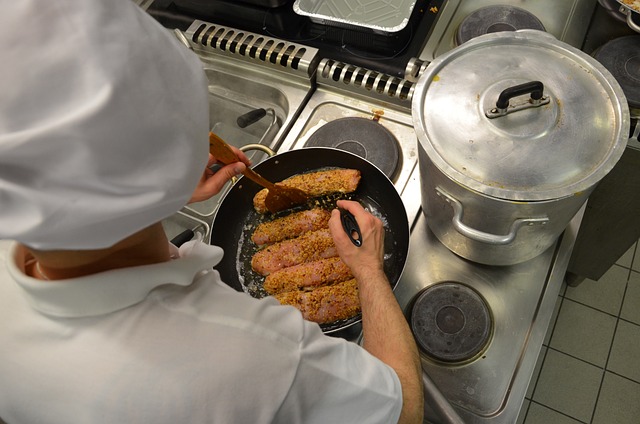
Cast iron cookware is known for its durability and heat retention. Understanding these properties is crucial for effective care. Cast iron heats slowly but retains heat exceptionally well, making it ideal for even cooking and searing. Welcome to the world of cast iron culinary mastery! Cast iron cookware is not just a kitchen tool; it’s a piece of culinary history. Whether you’re a seasoned chef or a kitchen novice, this ultimate guide will walk you through the essential steps of cleaning and caring for your cast iron treasures, ensuring they stand the test of time and become cherished heirlooms.
Not all cast iron is created equal. Recognize the variations, from classic skillets to Dutch ovens. Each type serves a specific purpose, so understanding the differences enhances your ability to care for and utilize these timeless pieces. The cornerstone of cast iron care is seasoning. Seasoning creates a natural non-stick surface by forming a protective layer of polymerized oil. Regularly seasoning your cast iron cookware not only prevents rust but also enhances its performance over time.
Separate fact from fiction by debunking common cast iron myths. Contrary to popular belief, soap can be used to clean cast iron, and acidic foods can be cooked without damaging the seasoning. Understanding these truths will demystify the care process. Cast iron loves to be used! Regular cooking sessions maintain the seasoning and prevent rust. If your cast iron hasn’t seen action in a while, a quick re-seasoning can revive its cooking prowess. From seasoning to storage, each detail is crafted to simplify the process and enhance your cooking experience.
See also our post on Green Cleaning for Camping Cookware: Eco-Friendly Outdoor Meals
Cleaning Cast Iron Cookware
Gentle Hand Washing
Contrary to the fear of water, hand washing with mild soap is acceptable. Use a soft brush or sponge to scrub away food residues. Avoid harsh scouring pads to preserve the seasoning.
Removing Stubborn Residues
For stubborn residues, create a paste with kosher salt and water. Gently scrub the affected areas, ensuring not to compromise the seasoning. This natural abrasive method is effective without harming your cast iron.
Say No to Dishwashers
Dishwashers and cast iron don’t mix. The harsh detergents and high heat can strip away the seasoning. Hand washing is the gentle and preferred method for maintaining the integrity of your cast iron.
Drying Thoroughly
After washing, dry your cast iron thoroughly to prevent rust. Towel-dry immediately, and if needed, place the cookware on a stovetop over low heat to ensure complete drying.
Post-Cooking Cleaning Routine
Incorporate a post-cooking cleaning routine. While the pan is still warm, wipe it down with a paper towel to remove excess oil and food particles. This simple step aids in maintaining the seasoning and simplifies the cleaning process later.
Seasoning and Re-Seasoning
Initial Seasoning Process
When you bring home a new piece of cast iron, or if you’re restoring an old one, initiate the seasoning process. Coat the cookware in a thin layer of oil and bake it in the oven. This creates the foundation for a non-stick surface and protects the iron from rust.
Choosing the Right Oil
Select the right oil for seasoning. Opt for oils with high smoke points, like vegetable oil or flaxseed oil. These oils undergo polymerization during seasoning, forming a resilient and effective non-stick coating.
The Art of Layering
Seasoning is all about layering. Apply thin layers of oil and bake them onto the surface. Repeat the process several times to build a robust seasoning that withstands high-heat cooking.
Signs of a Well-Seasoned Pan
A well-seasoned pan boasts a smooth, dark surface. When the seasoning is at its best, it imparts a glossy appearance. Don’t rush the process – each layer adds character and performance to your cast iron.
Re-Seasoning: A Necessary Ritual
Re-season your cast iron periodically. Continuous use, high-heat cooking, and cleaning may wear down the seasoning. Reapplying a thin layer of oil and baking ensures your cast iron remains in peak condition.
See also our post on Going Green in the Kitchen: Sustainable Cleaning for Appliances
Storage and Handling Tips
Proper Storage Techniques
Store your cast iron cookware in a cool, dry place. Avoid stacking multiple pieces directly on top of each other, and if stacking is necessary, place a soft barrier between them to prevent scratches.
Preventing Rust with Airflow
Allow for airflow during storage. Place a paper towel or cloth between the lid and the pan to prevent moisture accumulation, reducing the risk of rust.
Strategic Placement in the Kitchen
Strategically place your cast iron in the kitchen for convenience. Store frequently used pieces within easy reach to encourage regular use and prevent unnecessary wear on less-used items.
Handle with Care
Handle your cast iron with care to avoid chipping or cracking. Lift rather than drag the cookware, and refrain from using metal utensils that can damage the seasoning.
Restoring Rusty Cast Iron
If rust does appear, don’t panic. Scrub the rusted areas with steel wool, wash and re-season the pan. A little rust is a solvable issue, and restoring your cast iron is part of the long-term care process.
Troubleshooting Common Issues
Dealing with Sticky Residue
If your cast iron feels sticky after cooking, it’s a sign of excess oil buildup. Place the cookware in the oven upside down and bake it at a high temperature to allow the excess oil to drip away.
Handling Flaking Seasoning
Flaking seasoning is common with time and use. To address this, scrub away any loose bits, re-season the pan, and continue cooking. The process of seasoning and re-seasoning is a dynamic and ongoing part of cast iron care.
Tackling Smoke During Seasoning
Excessive smoke during seasoning indicates the oil is being applied too thickly. Wipe away excess oil before baking, and ensure thin, even layers for a successful seasoning process without the unwanted smoke.
Addressing Uneven Seasoning
Uneven seasoning can occur due to inadequate oil distribution. To rectify this, use a paper towel to spread oil evenly across the surface during the seasoning process, ensuring every inch receives proper coverage.
Dealing with a Dull Appearance
A dull appearance can result from insufficient oil during seasoning or inadequate maintenance. Restore the shine by applying thin layers of oil and baking, gradually building up the seasoning until the desired gloss is achieved.
See also our post on Janitorial Cleaning vs. Deep Cleaning: Which Does Your Business Need?
Conclusion
You have started a journey to become an expert in cleaning and caring for your cast iron cookware. From knowing the fundamentals to solving common problems, this in-depth guide gives you the skills you need to transform your cast iron cookware into treasured travel companions. As you season, cook, and take care of your cast iron, you are not just preserving cookware—you are fostering a legacy that will last for generations. Happy cooking with your enduring cast iron friends!







